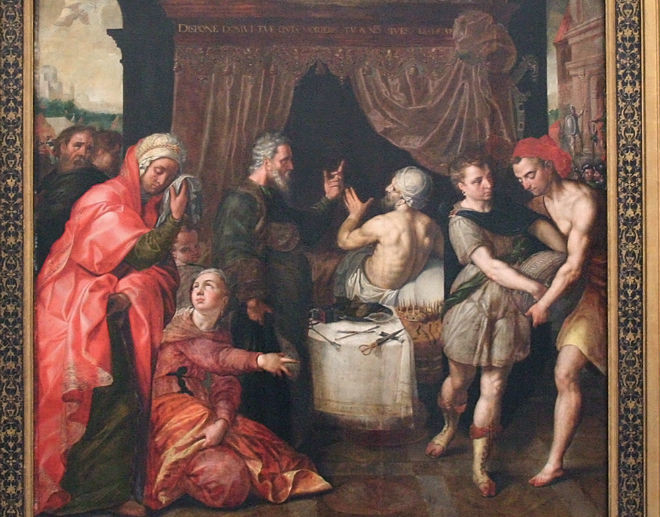Sackcloth is penitent clothing. It was also worn as a sign of mourning and a sign of submission. It was probably a scratchy cloth made of goat hair, which you would gird about your loins, next to your skin — an uncomfortable piece of clothing, to say the least. It was also called haircloth — since it was made of something like goat hair. Maybe it was like our burlap today. However, wool can be very scratchy as well. So what is the symbol of sackcloth?
In the scriptures, prophets and servants of God exchanged their clothing for sackcloth as a sign to Jehovah that they were sorry — as a sign that they were repenting and mourning. I’m not sure why you would need to use clothing as a sign of repenting, except perhaps it was more for the person wearing the scratchy clothing as a reminder that, yes, indeed, you are repenting. Some religions believe that you should cause yourself pain as part of the process of receiving forgiveness. I recall a yoga class that I attended where the master teacher said we were to stand in a circle with our arms out to our sides until feeling pain — that we need to feel pain or the God above will give us pain. Something like that. And there’s that book/movie — The Da Vinci Code which had something in it about self-flagellation.
About 701 B.C. King Hezekiah wore sackcloth for his people’s sins when he interceded for them:
When King Hezekiah heard it, he rent his clothes and put on sackcloth and entered the house of Jehovah. And he sent Eliakim the overseer of the palace, Shebna the secretary, and the elders of the priests in sackcloth to the prophet Isaiah the son of Amoz. (Isaiah 37: 1-2)
There are numerous accounts in the scriptures of wearing sackcloth.
What kind of repentance is the wearing of sackcloth — what does that really mean? Hezekiah was a suffering servant and sought not only his own forgiveness but forgiveness for his people too. He was able to turn covenant cursings into covenant blessings.
Surely it is more than changing your clothing because God is not happy when you do it without real intent:
Is this the manner of fasting I have required,
just a time for men to torment themselves?
Is it only for bowing one’s head like a reed
and making one’s bed of sackcloth and ashes?
Do you call that a fast,
a day of Jehovah’s good graces? (Isaiah 58:5)
While listening to a commentary on Isaiah by Avraham Gileadi, I realized something about sackcloth — it is an outward sign of your inward repentance — pare down your plenty and show God that you are repentant. (Isaiah 32: 11, Avraham Gileadi commentary) In this verse, Isaiah is telling the women to wake up, and stop being complacent, stop thinking all is well — destruction is coming:
Be alarmed, you complacent women;
be perturbed, O careless daughters!
Strip yourselves bare;
put sackcloth around your waists. (Isaiah 32:11)
Isaiah is indicating that we need to be spiritually and physically prepared for the last days. Repenting of our sins is part of that preparation. Paring down is one way of living the higher law. But I don’t recommend we wear the scratchy sackcloth. I’m willing to go without some luxury items and over-abundance. I sold my gold rings when we needed the money, and I learned that God provides my mana even when things look dire.
Featured Image: The Prophecy of the Recovery of Hezekiah
Originally posted 2015. Updated 2021

